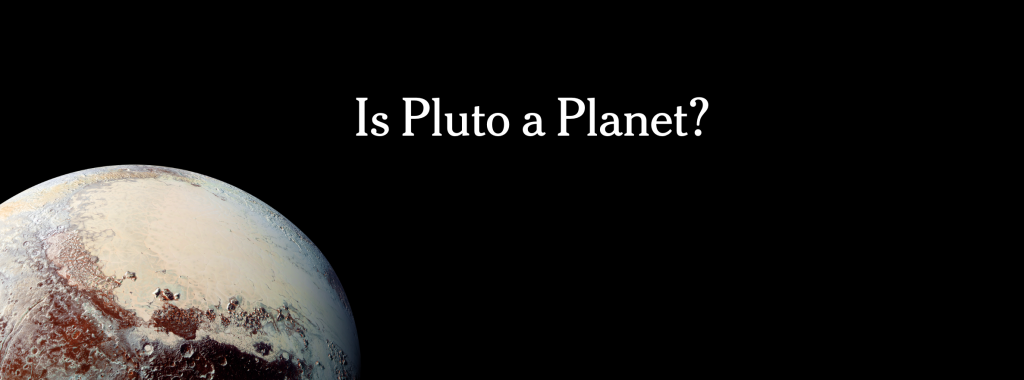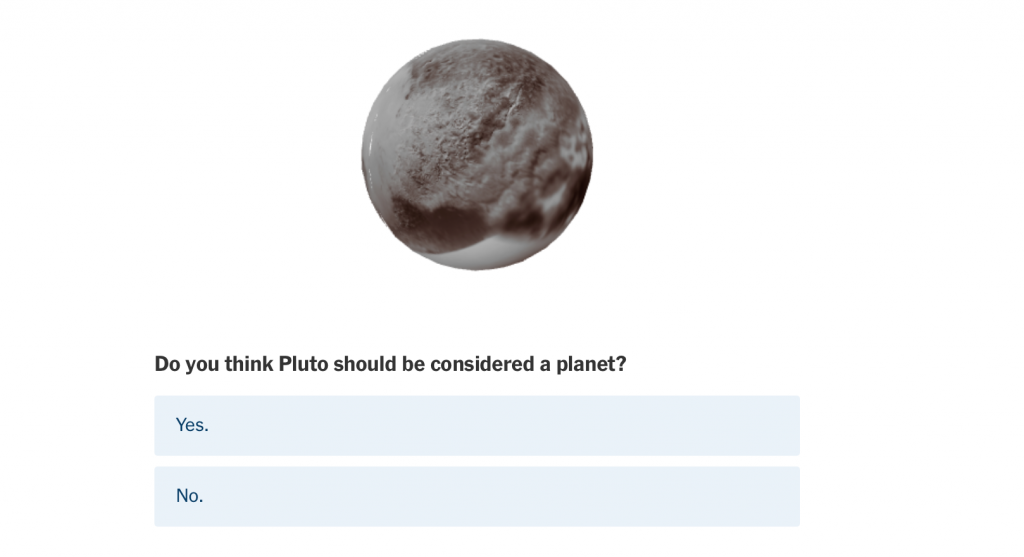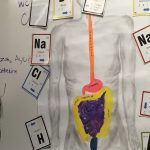LOG IN
Categories
Links we Love
Lab Work
Sc. 10 Tests & Assignments
July 2024 M T W T F S S 1 2 3 4 5 6 7 8 9 10 11 12 13 14 15 16 17 18 19 20 21 22 23 24 25 26 27 28 29 30 31 Science in the news
July 2024 M T W T F S S 1 2 3 4 5 6 7 8 9 10 11 12 13 14 15 16 17 18 19 20 21 22 23 24 25 26 27 28 29 30 31
Category Archives: Uncategorized
Coral Reef has been discovered in the South Pacific near Tahiti
Comments Off on Coral Reef has been discovered in the South Pacific near Tahiti
Posted in Uncategorized
Pluto Protest_Join the Protest on Jan. 19, 2022_See you there!
Comments Off on Pluto Protest_Join the Protest on Jan. 19, 2022_See you there!
Posted in Uncategorized
Michael Smith Science Challenge Competition takes place on Feb. 15, 2022
The 2022 Michael Smith Science Challenge Competition takes place on Feb. 15, 2022.
The Michael Smith Science Challenge is a bilingual national competition written by students in Grade 10 Science or lower.
It emphasizes logical thinking and covers material in the science curriculum common to all provinces.
It is named in honour of UBC’s Nobel Prize Winner Dr. Michael Smith and is sponsored by the UBC Faculty of Science.
Prizes are awarded to the top students (and their teachers) in each province, territory, and nationally.
The 2022 Challenge will be run entirely online – students will complete the challenge entirely online at school or at home – depending on local circumstances and at the discretion of the teacher.
No teacher invigilation is required. Teachers with questions regarding the challenge can contact mschall@phas.ubc.ca for more information.
The 2022 official writing day is Tuesday, February 15, 2022
This challenge will be a one-hour, timed contest to be started and completed between 06:00-20:00 Pacific Standard Time.
Students need to register with their teacher to participate in the competion. The exam is written online. Please see your science teacher to register before Jan. 21, 2022.
Interested? Take a look at the 2021 competition.
Prizes
We reserve the right not to give a provincial prize if the top mark from that province is lower than the national average, or if less than 20 students or three schools participate from that province. We also reserve the right, in the event of a draw, to depart from our stated list of national prizes.
Nationally: 1st – $500, 2nd – $250, 3rd – $100
Provincially: $100 for the top student without a national prize, $50 for each student in a tie
Teachers: $50 for a teacher with a prize-winning student
Comments Off on Michael Smith Science Challenge Competition takes place on Feb. 15, 2022
Posted in Uncategorized
Fluor Engineering Challenge
https://www.sciencebuddies.org/fluor-challenge-2022?from=Newsletter
Fluor 2022 Engineering Challenge

Comments Off on Fluor Engineering Challenge
Posted in Uncategorized
Comment period starts on a proposed ban on Single-Use Plastics; Comment period ends on March 5, 2022
The Canadian Government, Environment and Climate Change Canada, has opened the comment period on a proposed ban on single-use plastics. The comment period ends on March 5, 2022.


Read the email from Environment and Climate Change Canada – get ready to provide a comment 🙂
Email from Environment and Climate Change Canada
December 30, 2021
Greetings,
On December 25, 2021, the proposed Single-Use Plastics Prohibition Regulations were published in the Canada Gazette, Part I initiating a 70-day public comment period ending on March 5, 2022. During this period, stakeholders and partners are invited to submit comments to Environment and Climate Change Canada on the proposed Regulations, the accompanying Regulatory Impact Analysis Statement, as well as the draft Guidance for Selecting Alternatives.
The proposed Regulations would prohibit the manufacture, import and sale of six categories of single-use plastic items (checkout bags, cutlery, foodservice ware made from or containing problematic plastics, ring carriers [think six-pack holders], stir sticks, and straws), with certain exceptions for straws.
The feedback received on the proposed Integrated Management Approach to Plastic Products has been considered in the development of the proposed Regulations. A What We Heard Report summarizes this feedback.
The draft Guidance for Selecting Alternatives to the Single-Use Plastics in the Proposed Single-Use Plastics Prohibition Regulations has been developed to help businesses and other organizations make decisions on alternative products or systems that prevent pollution and help Canada transition to a circular economy.
We invite you to review the proposed Regulations, the accompanying Regulatory Impact Analysis Statement, as well as the draft Guidance for Selecting Alternatives and to provide your feedback, no later than March 5, 2022, to the following email address: plastiques-plastics@ec.gc.ca.
Feedback should include the following for each specific comment:
1. the section of the proposed Regulations, Regulatory Impact Analysis Statement, or draft Guidance for Selecting Alternatives to which the comment relates
e.g., 5(1)(a)(i) of the regulatory text; “Select Canadian Market Characteristics” section of the Regulatory Impact Analysis Statement;“Considerations for Alternative Single-use Plastics” section of the draft Guidance for Selecting Alternatives;
2. the comment itself; and
3. any supporting information or rationale.
All written feedback received during the comment period will be considered in the development of the final Regulations and Regulatory Impact Analysis Statement, which will be published in the Canada Gazette, Part II. Feedback will also inform the finalization of the Guidance for Selecting Alternatives.
Environment and Climate Change Canada is available to provide further information and clarification on the requirements of the proposed Regulations to affected businesses or organizations, via virtual meetings or webinars.
Should you have any questions on this consultation process, or if you do not wish to receive future updates about the proposed Regulations please contact us at plastiques-plastics@ec.gc.ca.
Comments Off on Comment period starts on a proposed ban on Single-Use Plastics; Comment period ends on March 5, 2022
Posted in Uncategorized
A solar yule log – Merry Christmas and a Happy New Year!
Comments Off on A solar yule log – Merry Christmas and a Happy New Year!
Posted in Uncategorized
Solar Parker probe reaches the Sun’s corona
Another first for space exploration, the solar Parker probe begins to explore the corona to help scientists better understand solar outbursts that can interfere with life on Earth.
The sun does not have a solid surface. This means that the corona is where the magnetically intense region of the sun is. Scientists can better understand this magnetically intense region and better understand the solar outbursts that can interfere with life on Earth.
The solar Parker probe was Launched in 2018. The Parker probe was 13m km from the center of the sun when it first crossed the jagged, uneven boundary between the solar atmosphere and outgoing solar wind.
Comments Off on Solar Parker probe reaches the Sun’s corona
Posted in Uncategorized
Energy Transformations
Learn more about how energy is transformed but never lost:
Miniture Science
Comments Off on Energy Transformations
Posted in Uncategorized
Nurdles: the worst toxic waste you probably never heard of
Learn more about the worst toxic waste – nurdles
Nurdles, the colloquial term for “pre-production plastic pellets”, are the little-known building block for all our plastic products. The tiny beads can be made of polyethylene, polypropylene, polystyrene, polyvinyl chloride and other plastics. Released into the environment from plastic plants or when shipped around the world as raw material to factories, they will sink or float, depending on the density of the pellets and if they are in freshwater or saltwater.
They are often mistaken for food by seabirds, fish and other wildlife. In the environment, they fragment into nanoparticles whose hazards are more complex. They are the second-largest source of micropollutants in the ocean, by weight, after tyre dust. An astounding 230,000 tonnes of nurdles end up in oceans every year.
Comments Off on Nurdles: the worst toxic waste you probably never heard of
Posted in Uncategorized
Developing new language to describe the climate crisis = climate catastrophe
Learn more about how the science and forecasting language of the climate crisis is adapting to meet our new weather reality: Link to article
A Scale to Characterize the Strength and Impacts of Atmospheric Rivers
This paper introduces a scale for the intensity and impacts of ARs. Its utility may be greatest where ARs are the most impactful storm type and hurricanes, nor’easters, and tornadoes are nearly nonexistent. (Martin, 2019).
Learn more: Link
Comments Off on Developing new language to describe the climate crisis = climate catastrophe
Posted in Uncategorized







